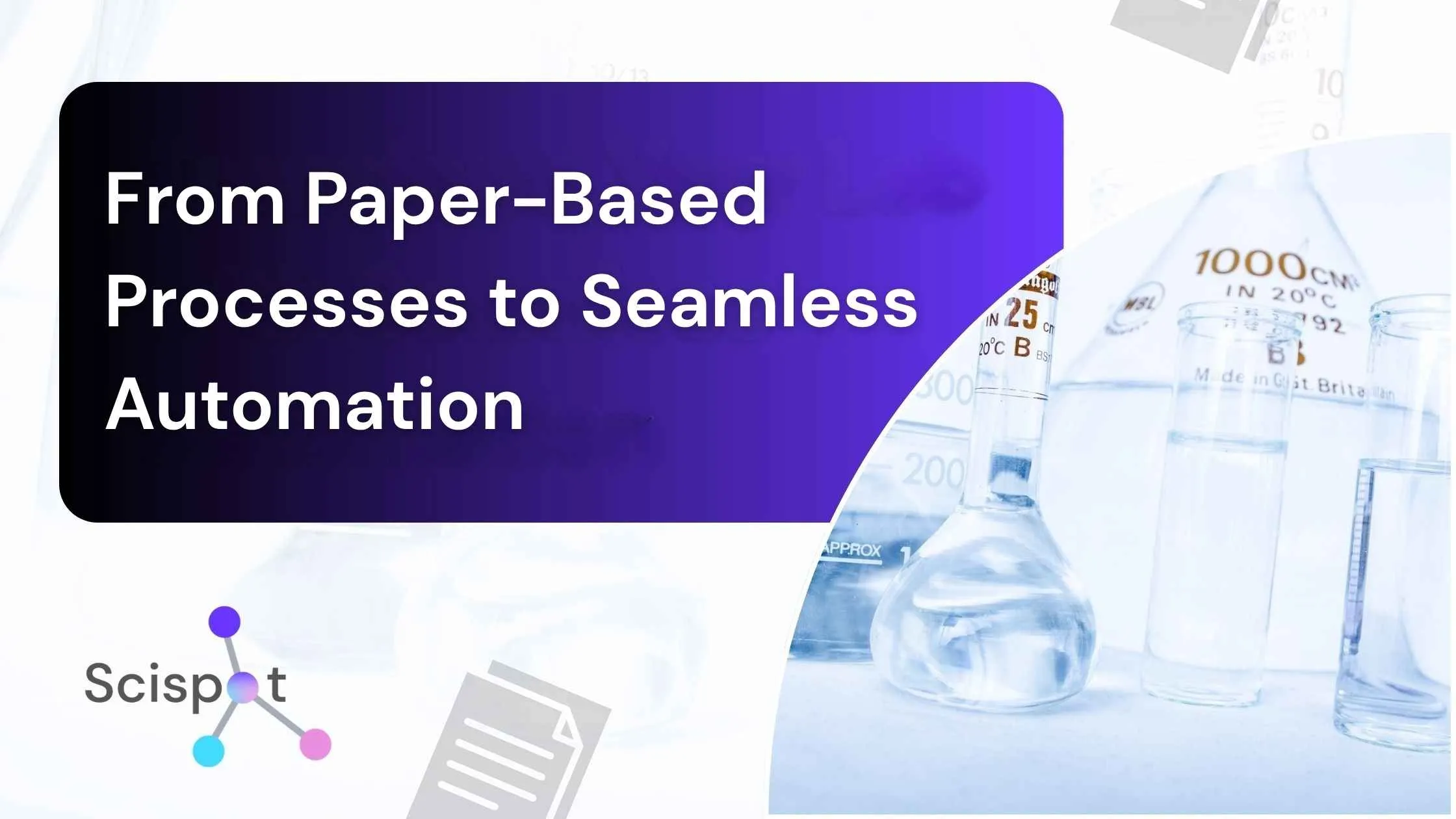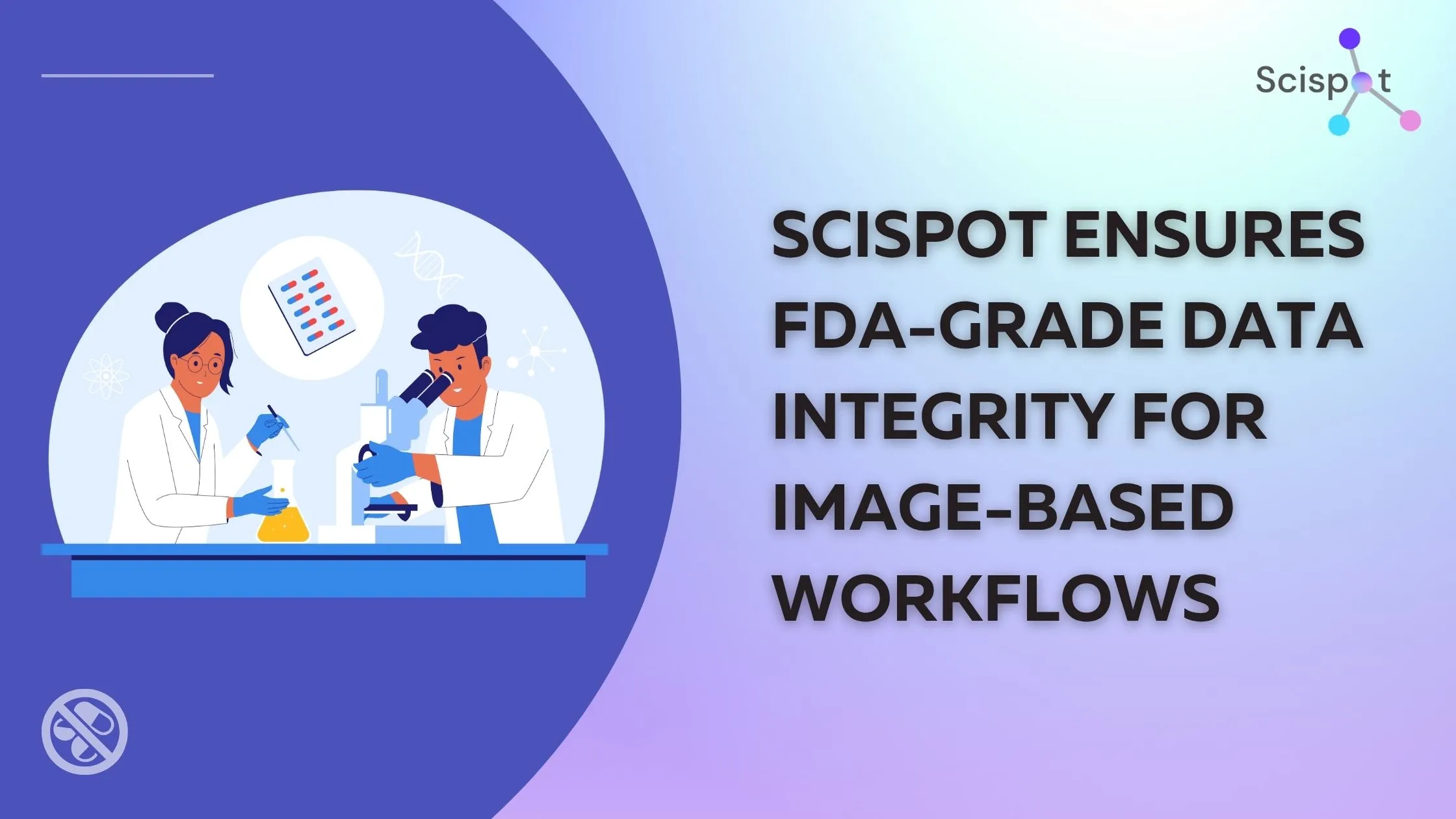The pressure on regulated laboratories to modernize has never been greater. While many biotech and pharmaceutical companies still rely on traditional paper-based systems, the mounting challenges of regulatory compliance, data integrity requirements, and operational efficiency are forcing a critical shift toward digital lab transformation.
Today's regulatory landscape demands more than just good intentions. Labs operating under stringent guidelines like 21 CFR Part 11 compliance and USDA licensing requirements face increasing scrutiny from auditors who expect seamless data trails, robust security measures, and foolproof documentation processes. The question isn't whether to digitize, but how to do it effectively without compromising compliance or disrupting ongoing research.

The Hidden Costs of Paper-Based Laboratory Operations
Manual data capture remains one of the biggest operational bottlenecks in modern laboratories. Research teams spend countless hours transcribing instrument readings, managing physical notebooks, and attempting to maintain coherent audit trails across fragmented systems. These paper-based limitations extend far beyond simple inefficiency.
Data entry errors compound quickly in manual environments, potentially compromising entire research datasets and creating compliance vulnerabilities that auditors will inevitably discover. When regulatory inspections occur, labs using paper systems often struggle to provide the comprehensive documentation trails that digital systems generate automatically.
The fragmentation problem becomes even more complex when laboratories attempt to integrate legacy systems with modern instruments. Multiple standalone platforms create operational silos where critical data becomes trapped, making it nearly impossible to maintain the holistic view that effective laboratory data management requires. Modern solutions like Scispot's LIMS platform address these challenges by providing unified data management that connects all lab operations under a single, compliance-ready system.
Building Audit-Ready Digital Infrastructure
Regulatory compliance in today's environment requires more than occasional documentation reviews. 21 CFR Part 11 compliance mandates comprehensive electronic record keeping with built-in security controls, user authentication protocols, and unalterable audit trails. These requirements fundamentally change how laboratories must approach their data management strategies.
Digital systems designed for regulated environments automatically capture metadata, track user activities, and maintain chronological records of all data modifications. This automated approach eliminates the manual effort traditionally required for audit preparation while providing the transparency that regulatory bodies demand. Labs seeking comprehensive compliance support can leverage GXP compliance solutions that ensure adherence to regulatory standards from day one.
Advanced lab automation software goes beyond basic record keeping by implementing role-based access controls, electronic signature capabilities, and real-time monitoring systems that prevent unauthorized data modifications. When properly implemented, these digital safeguards create an environment where compliance becomes an automatic byproduct of normal laboratory operations rather than a separate administrative burden.

Seamless Integration Through Modern Middleware Solutions
One of the most challenging aspects of digital lab transformation involves connecting existing laboratory instruments with new digital platforms. Middleware integration serves as the critical bridge that allows legacy equipment to communicate effectively with modern data management systems.
This integration approach enables laboratories to preserve their existing instrument investments while gaining the benefits of centralized data management. Real-time data capture from multiple instruments flows seamlessly into unified dashboards, providing research teams with immediate access to comprehensive experimental data without manual transcription steps.
Platforms like Scispot's GLUE integration engine exemplify this middleware approach by connecting laboratory instruments, databases, and analytical tools in real-time. This comprehensive connectivity ensures that data integrity remains intact throughout the entire research workflow while maintaining the audit trails that regulatory compliance requires.
Scaling Operations Without Compromising Compliance
Growing laboratories face unique challenges when attempting to maintain regulatory compliance while expanding their operational capacity. Traditional paper-based systems become exponentially more complex as sample volumes increase and research teams expand across multiple locations.
Scalable digital platforms accommodate increased workloads without compromising data integrity or compliance requirements. Cloud-based solutions provide the flexibility to add new users, integrate additional instruments, and expand storage capacity as research demands evolve. This scalability ensures that compliance infrastructure grows seamlessly alongside laboratory operations.
Modern laboratory data management platforms offer configurable workflows that adapt to changing research protocols without requiring complete system overhauls. Features like automated reporting, customizable dashboards, and flexible data models enable laboratories to maintain operational efficiency even as their research focus evolves. Scispot's Labsheets provides this adaptability through no-code configuration options that allow research teams to modify their data management workflows without technical expertise.

Implementing Change Management for Digital Success
Successful digital lab transformation requires more than just technology implementation. Research teams must adapt to new workflows, learn updated procedures, and develop confidence in digital systems that may initially seem more complex than familiar paper-based methods.
Effective change management begins with comprehensive training programs that demonstrate the practical benefits of digital systems. When research teams understand how automated data capture reduces their administrative workload and improves experimental reproducibility, adoption becomes significantly more straightforward. User-friendly interfaces and intuitive design principles help bridge the gap between traditional laboratory practices and modern digital workflows.
Organizations that provide dedicated implementation support during the transition period typically achieve higher success rates and faster user adoption. White-glove transition services that include protocol validation, user training, and ongoing technical support create the foundation for long-term digital transformation success. This comprehensive approach ensures that laboratories can maintain their research productivity throughout the modernization process.
Advanced Features for Research Excellence
Modern digital platforms extend far beyond basic data storage and retrieval. Advanced features like AI-powered data analysis, automated workflow triggers, and predictive analytics transform raw laboratory data into actionable research insights.
Electronic laboratory notebooks with built-in collaboration features enable distributed research teams to work together seamlessly while maintaining complete audit trails and version control. These digital notebooks automatically capture experimental protocols, instrument settings, and environmental conditions that might be overlooked in manual documentation systems.
Integration with analytical tools like Jupyter notebooks and statistical software packages enables researchers to perform sophisticated data analysis without manual data export and import procedures. This seamless connectivity between data collection and analysis accelerates the research timeline while maintaining the data integrity that regulatory compliance requires.
The future of regulated laboratory operations lies in platforms that combine compliance capabilities with research productivity tools. Organizations that invest in comprehensive digital transformation today position themselves to meet evolving regulatory requirements while maintaining their competitive edge in an increasingly data-driven research environment.
Ready to transform your laboratory operations with compliant, scalable digital solutions? Book a free consultation to discover how Scispot can help your lab achieve regulatory compliance while boosting research productivity.






.webp)





